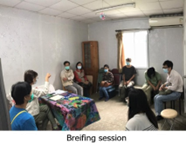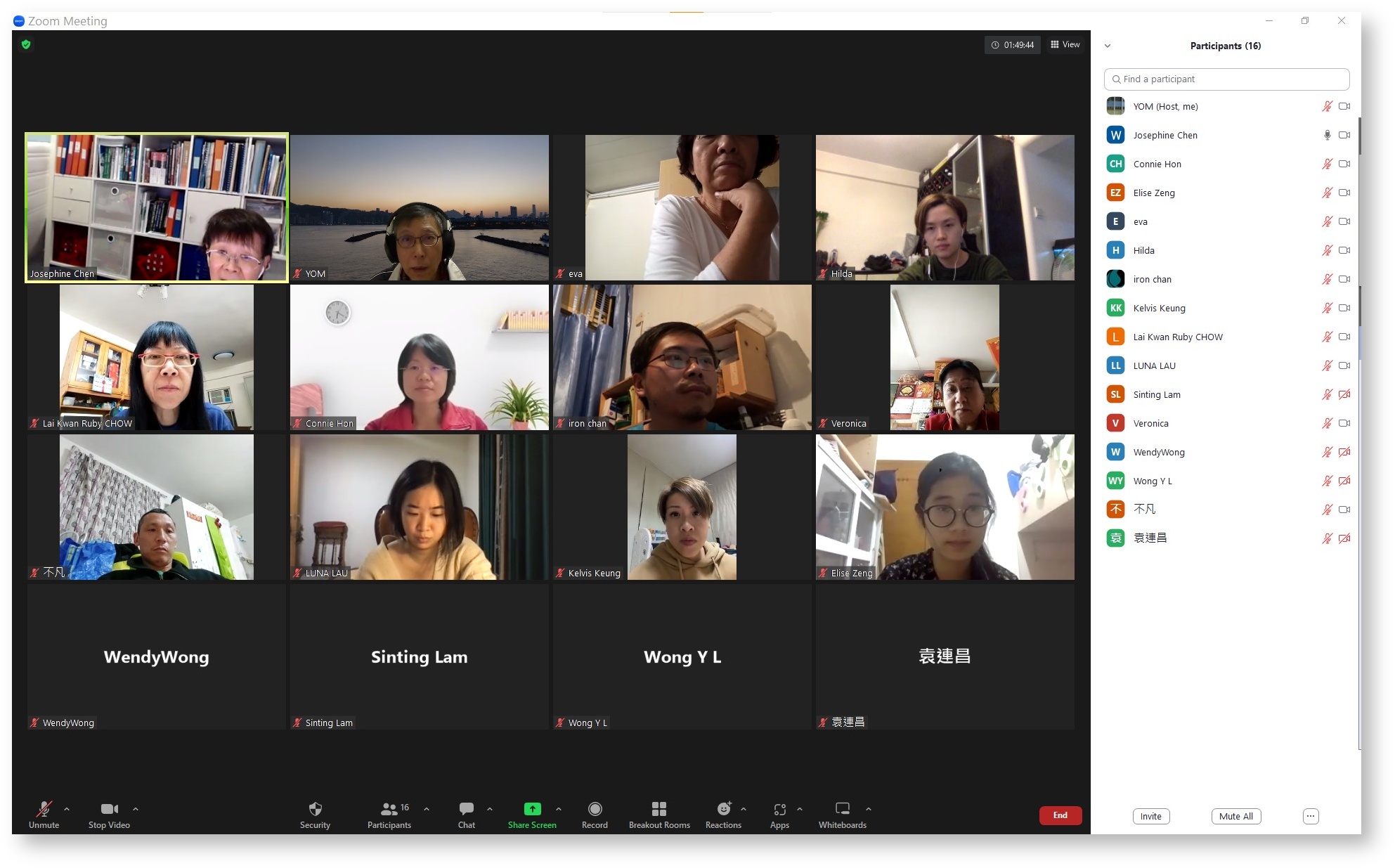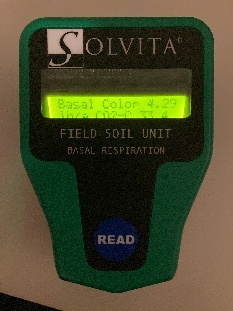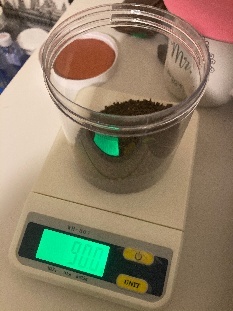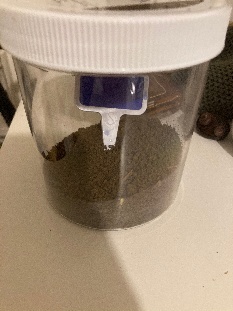You must log in to view this page properly.
Instructions
Two simple steps to display your presentation(s), upload and embed.
Uploading
- Drag and drop the presentation(s) into the upload area below to upload and attach them to this page.
- We recommend saving PowerPoint presentations as PDF files.
Once uploaded, the files are listed below. You may click on the small arrow to the left of a document
to change its properties or delete it.
Embed
- Click on
in the upper right corner of the page to open the editor.
- Put the cursor into the Excerpt box. (The Excerpt box will appear once you edit the page.)
- You need to select the appropriate macro to embed the presentation.
- For PDF files (file name extension pdf) type {pdf and select PFD from the drop-down menu to open the macro. Select the desired file under "Filename" and click "Save" to insert the macro in the Excerpt box.
- For PowerPoint files (file name extension ppt or pptx) type {pp and select Office Powerpoint from the drop-down menu to open the macro. Select the desired file under "Filename" and click "Save" to insert the macro in the Excerpt box.
- For Word files (file name extension doc or docx) type {doc and select Office Word to open the macro. Select the desired file under "Filename" and click "Save" to insert the macro in the Excerpt box.
- You may add several files, one after another.
- Click on
in the lower right corner of the editor to save your changes.
| For PDF write {pdf | For PowerPoint write {pp | For Word write {doc |
Collaboration with ZFPA – helping farms to make the switch
ZPFA reached out to HomelandGreen for assistance to launch a Restore project that promotes, amongst others, adoption of regenerative practices in local farms. The Restore project is funded by ZPFA’s restaurant partners.
Zero Foodprint Asia (ZFPA), an extension of Zero Foodprint (ZFP) in California, is a nonprofit organization mobilizing the food world around agricultural climate solutions. ZFPA hosts a crowdfunding program that gathers funds from member food businesses such as restaurants, cafes, bars and food retailers. Members pledge 1% of every restaurant purchase to ZFPA to fund regenerative farming practices that draw down carbon from the atmosphere and help combat global warming.
-- Excerpt from ZFPA Annual Report
Our role in this collaboration
| HomelandGreen advises the five local farms receiving the ZPFA Restore Fund with the transition to regenerative farming methods from using the fertilizer trio (chicken manure pellets, bone and peanut meal) to nutrient supplements, such as hydrolysate made from natural material such as fish, nut powder and other residue from food processing. The goal is to restore the soil microbiome and enhance the nutritional profile avoiding the adverse effects of conventional NPK or organic fertilizers without giving due consideration of their carbon consumption effect in soil. |
| Throughout the project, we share with the farmers the how-and-why including the science behind it. This transfer of knowledge helps them to be better informed farmers. The weekly sharing session brings the participating farmers and the technical assistants of the Restore project together creating an RF community. |
| We also help to provide free training for the technical assistants who are responsible for monitoring the farms’ progress. The Restore project has also acquired various tools including soil penetrometer, soil sample collector, portable soil pH, temperature and humidity meter, various soil and sap ion meters, pH meter, conductivity CEC meter, Brix refractometer, CO2, and chlorophyll meter to collect data. They are used for progress assessment and fine tuning of daily practice. |
Our belief |
|---|
|
The basic premise of regenerative farming is science and evidence-based, it starts with restoring the vitality of the soil.
This document (Fundamental Principles of RF practices.pdf) summarizes the principles and methods HomelandGreen shares with farmers.
Some Tools and tests used in the Restore Project
| CO2 meter |
| Field CO2 meter |
Electrical conductivity probe | |
| MicroBiometer | |
 | Moisture meter |
| Penetrometer | |
| Soil cube observation |
 | Soil infiltration test |
| Plant roots observation | |
| Brix meter | |
| Nitrate meter | |
| Chlorophyll meter |
Challenges unique in Hong Kong farms
- Farm sizes are small and scattered ranging from 1,200 m2 to 25,000 m2. Much smaller than those in North America and Europe.
- Planting plots or paddocks are short, 3 m to 30 m in length.
- Intercropping is practiced by default as they are mostly market gardening farms for vegetables. More than 10 types of crops are grown at any time.
- Paddocks switched between various leafy veggies to fruiting plants such as eggplants, tomatoes, peppers, gourds/melons and corns.
- The F:B ratio requirements for these crops are different. The new crop has an easier time if the F:B ratio is similar to the previous crop. It is observed that corns on paddocks that previously grow leafy veggies take longer to establish. The farmers need to adjust the soil microbiome mix before planting to ensure the corns grow to their full potential early on. Unfortunately, most farmers are not aware of this and commonly falsely resort to applying more fertilizers.
- Brassicas including Chinese kale and Choy sum are veggies of choice here in Hong Kong. It is a challenge to grow brassicas in the humid and hot summer season resulting in reliance on fertilizers and pesticides.
- Cultural practices such as intercropping and crop rotation without considering F:B ratios requirement of crops yields hit-and-miss results. Crops may show sign of poor health with increased abiotic stress.
Soil pH is also driven by F:B ratio. No wonder some crops adapted to high F:B ratio prefer low soil pH (acidic) and low F:B ratio prefer neutral to higher soil pH (slightly alkaline; more lignin)

Other fronts
| Composting workshops | |
Preparing fish hydrolysate | |
| Providing consultation for student research project | |
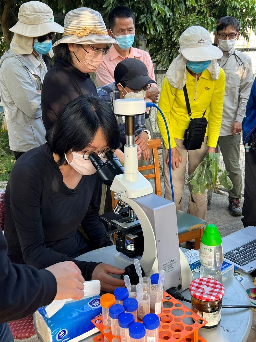 | |
Field works |
June 2023
| File | Modified | |
|---|---|---|
| PNG File image2023-5-20_20-38-41.png | May 20, 2023 by Daniel Yuen | |
|
Labels
|
||
| PNG File image2023-5-20_20-40-7.png | May 20, 2023 by Daniel Yuen | |
|
Labels
|
||
| PNG File image2023-5-20_20-41-30.png | May 20, 2023 by Daniel Yuen | |
|
Labels
|
||
| PNG File image2023-5-20_20-41-40.png | May 20, 2023 by Daniel Yuen | |
|
Labels
|
||
| JPEG File FungalBacterialRatio1.jpg | May 20, 2023 by Daniel Yuen | |
|
Labels
|
||
| PNG File image2023-5-20_22-28-23.png | May 20, 2023 by Daniel Yuen | |
|
Labels
|
||
| PNG File image2023-5-20_22-28-31.png | May 20, 2023 by Daniel Yuen | |
|
Labels
|
||
| PNG File image2023-5-20_22-28-39.png | May 20, 2023 by Daniel Yuen | |
|
Labels
|
||
| PNG File image2023-5-20_22-28-45.png | May 20, 2023 by Daniel Yuen | |
|
Labels
|
||
| Multimedia File Farm Visit on 230227.mp4 | May 24, 2023 by Daniel Yuen | |
|
Labels
|
||
| JPEG File R0007625.JPG | May 24, 2023 by Daniel Yuen | |
|
Labels
|
||
| JPEG File Composting.JPG | May 24, 2023 by Daniel Yuen | |
|
Labels
|
||
| JPEG File Compost.JPG | May 24, 2023 by Daniel Yuen | |
|
Labels
|
||
| JPEG File Making compost.JPG | May 24, 2023 by Daniel Yuen | |
|
Labels
|
||
| JPEG File Screenshot 2023-02-09 205253.jpg | May 24, 2023 by Daniel Yuen | |
|
Labels
|
||
| JPEG File Johnson_Su.JPG | May 24, 2023 by Daniel Yuen | |
|
Labels
|
||
| JPEG File Making fish hydrolysate.JPG | May 24, 2023 by Daniel Yuen | |
|
Labels
|
||
| JPEG File Display of research project.JPG | May 24, 2023 by Daniel Yuen | |
|
Labels
|
||
| Multimedia File Video on fish hydrolysate making.MP4 | May 24, 2023 by Daniel Yuen | |
|
Labels
|
||
| JPEG File Taking soil sample.JPG | May 24, 2023 by Daniel Yuen | |
|
Labels
|
||
| JPEG File Soil sampling 3.JPG | May 24, 2023 by Daniel Yuen | |
|
Labels
|
||
| JPEG File Holiba 1.JPG | May 24, 2023 by Daniel Yuen | |
|
Labels
|
||
| JPEG File Brix meter (2).JPG | May 24, 2023 by Daniel Yuen | |
|
Labels
|
||
| JPEG File Date collection.JPG | May 24, 2023 by Daniel Yuen | |
|
Labels
|
||
| JPEG File Penetrometer 3.JPG | May 24, 2023 by Daniel Yuen | |
|
Labels
|
||
| JPEG File Microorganisms under the mic.jpeg | May 24, 2023 by Daniel Yuen | |
|
Labels
|
||
| JPEG File Soil test.JPG | May 24, 2023 by Daniel Yuen | |
|
Labels
|
||
| JPEG File Field work 6.JPG | May 24, 2023 by Daniel Yuen | |
|
Labels
|
||
| JPEG File Field work 1.JPG | May 24, 2023 by Daniel Yuen | |
|
Labels
|
||
| JPEG File Brix 1.JPG | May 24, 2023 by Daniel Yuen | |
|
Labels
|
||
| Multimedia File Video on field work.MP4 | May 24, 2023 by Daniel Yuen | |
|
Labels
|
||
| JPEG File IMG_4531.jpg | May 24, 2023 by Daniel Yuen | |
|
Labels
|
||
| File IMG_4544.HEIC | May 24, 2023 by Daniel Yuen | |
|
Labels
|
||
| JPEG File IMG_4750.JPG | May 24, 2023 by Daniel Yuen | |
|
Labels
|
||
| JPEG File IMG_4554.jpg | May 24, 2023 by Daniel Yuen | |
|
Labels
|
||
| JPEG File IMG_4547.jpg | May 24, 2023 by Daniel Yuen | |
|
Labels
|
||
| JPEG File IMG_4548.jpg | May 24, 2023 by Daniel Yuen | |
|
Labels
|
||
| JPEG File IMG_4982.JPG | May 24, 2023 by Daniel Yuen | |
|
Labels
|
||
| JPEG File MicroBiometer 1.JPG | May 24, 2023 by Daniel Yuen | |
|
Labels
|
||
| PNG File IMG_4630.PNG | May 24, 2023 by Daniel Yuen | |
|
Labels
|
||
| JPEG File IMG_4623.jpg | May 24, 2023 by Daniel Yuen | |
|
Labels
|
||
| JPEG File IMG_4967.JPG | May 24, 2023 by Daniel Yuen | |
|
Labels
|
||
| JPEG File IMG_4969.JPG | May 24, 2023 by Daniel Yuen | |
|
Labels
|
||
| JPEG File IMG_4275.jpg | May 24, 2023 by Daniel Yuen | |
|
Labels
|
||
| JPEG File IMG_4983.JPG | May 24, 2023 by Daniel Yuen | |
|
Labels
|
||
| JPEG File IMG_4984.JPG | May 24, 2023 by Daniel Yuen | |
|
Labels
|
||
| JPEG File R0007572.jpeg | May 24, 2023 by Daniel Yuen | |
|
Labels
|
||
| JPEG File IMG_4816.JPG | May 24, 2023 by Daniel Yuen | |
|
Labels
|
||
| JPEG File IMG_4753.JPG | May 24, 2023 by Daniel Yuen | |
|
Labels
|
||
| JPEG File IMG_4757.JPG | May 24, 2023 by Daniel Yuen | |
|
Labels
|
||
| JPEG File IMG_4759.JPG | May 24, 2023 by Daniel Yuen | |
|
Labels
|
||
| JPEG File IMG_4960.JPG | May 24, 2023 by Daniel Yuen | |
|
Labels
|
||
| JPEG File IMG_4962.JPG | May 24, 2023 by Daniel Yuen | |
|
Labels
|
||
| PDF File Fundamental Principles of RF practices.pdf | May 25, 2023 by Daniel Yuen | |
|
Labels
|
||
| Multimedia File Video on workshop.MP4 | May 25, 2023 by Daniel Yuen | |
|
Labels
|
||
| JPEG File R0007272.JPG | May 25, 2023 by Daniel Yuen | |
|
Labels
|
||
| JPEG File R0007273.JPG | May 25, 2023 by Daniel Yuen | |
|
Labels
|
||

